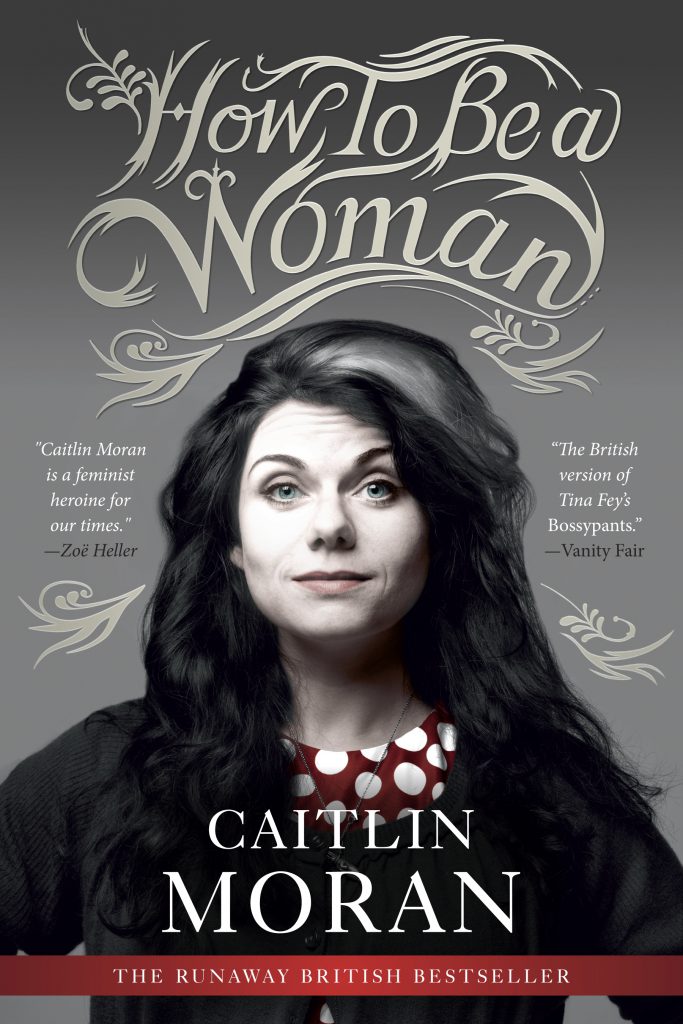This post is part of the 2013 Feminist Reads Challenge. To learn more about the challenge or join in, click here.
by Georgia Luckhurst
I don’t much admire many of Caitlin Moran’s ideologies. I admire her style of writing (because it is rambling and frivolous, and that definitely appeals to my sense of humour) but when it comes to her commentary on feminism, those attributes seem sour: often her politics and views are very haphazard and half-thought out, like she’s searching for a punchline to them and not yet found one. Despite my skepticism, I wanted to read her tongue in cheek “manifesto” How To Be A Woman because Moran is a divisive figure and it felt like I needed to read up properly before entering the debate.
definitely appeals to my sense of humour) but when it comes to her commentary on feminism, those attributes seem sour: often her politics and views are very haphazard and half-thought out, like she’s searching for a punchline to them and not yet found one. Despite my skepticism, I wanted to read her tongue in cheek “manifesto” How To Be A Woman because Moran is a divisive figure and it felt like I needed to read up properly before entering the debate.
How To Be A Woman has been hailed as “an indispensable guide to Ladyhood” by British presenter Lauren Laverne, and praised a book “every woman should read” in magazine Grazia. Having read the book myself, I can’t help but feel the acclamations the book received don’t ring entirely true. There’s no doubt that Moran’s voice is so loud and vivacious that you can practically hear her speaking to you as you read, but there are some serious issues which make me feel pretty dgamn uncomfortable.
Firstly, the idea that “overt” sexism is dead – I feel like that concept definitely comes from a place of privilege. Moran even claims to “miss” what she terms “old-fashioned sexism”. I agree that misogyny has become increasingly shadowy, so woven into the fabric of our society that sometimes its difficult to recognise, but I also think that there are lots of very blatant, obvious acts of sexism that many women don’t experience due to the certain kinds of privilege they benefit from. Secondly, the fact that Moran attempts to prove many of her arguments by seeking to remind women that men won’t like it, which seems really anti-feminist principles, to me. For example, when Moran is putting forward the proposal that high heels are bad. (I disagree with her on that, too – I love heels and don’t think there’s anything intrinsically wrong with them as long as you wear them because they make you happy, but that’s not why I’m unimpressed by her argument.) Moran writes, “most men distrust… a heel” as though that is a good, sane reason for why women across the world should immediately stop wearing what they want to hear – because, hey, it might upset men, right? Here’s a direct quote: “A chick in heels makes a man feel shorter. In man terms, this is like making a lady feel fatter. They don’t like it.”
There is so much wrong with that idea. Seriously.
One aspect of How To Be A Woman that disgruntled me, to say the least, was when Moran began to discuss and define sexism throughout history. According to her, “women have basically done fuck all for the last 100,000 years”. Instead of blaming this silencing of female talent and voice due to a system of oppression, Moran acts as though some kind of monumental laziness on the behalf of all women lost us the battle of historical success. At one point, Moran literally says “everything so far has been the creation of men.”
Here’s what I have to say about that: I know that there has been a monolith of male scientists, writers, politicians, influencers, etc. But I also know, despite what misogyny they were subjegated to – which was not their fault and still isn’t – there are plenty of amazing, inspirational women who contributed greatly to our world. Believe me; all of us at SPARK have our own personal idols as proof. I grew up learning about people like Marie Curie and Mary Seacole in school, so I don’t know why Moran, a self-described feminist, doesn’t want to acknowledge such people who inspire young men and women on a daily basis.
I’m glad I read How To Be A Woman as it gave me a lot to think about. There are good aspects, but a lot of them are based too heavily on the laughter Moran clings to, rather than deeper thought and discussion.
